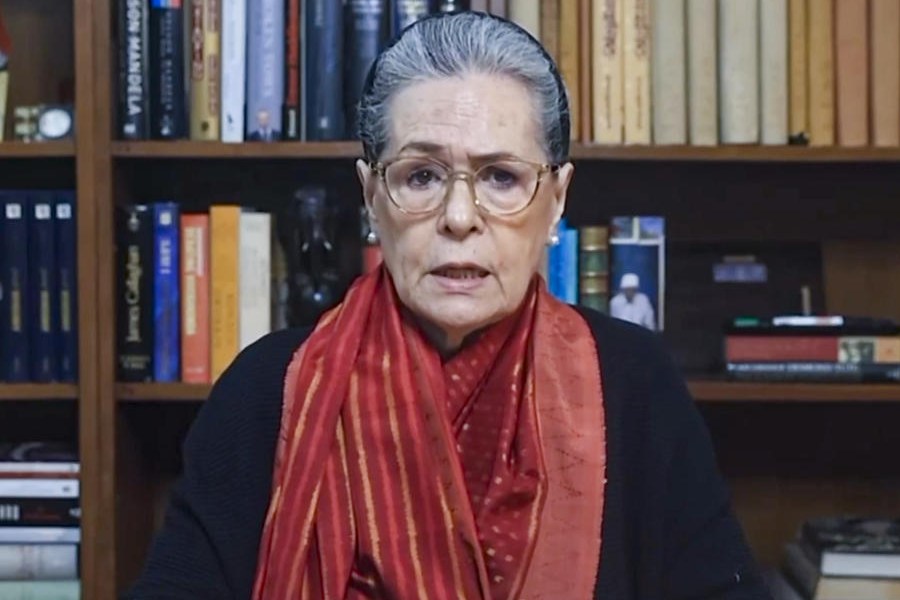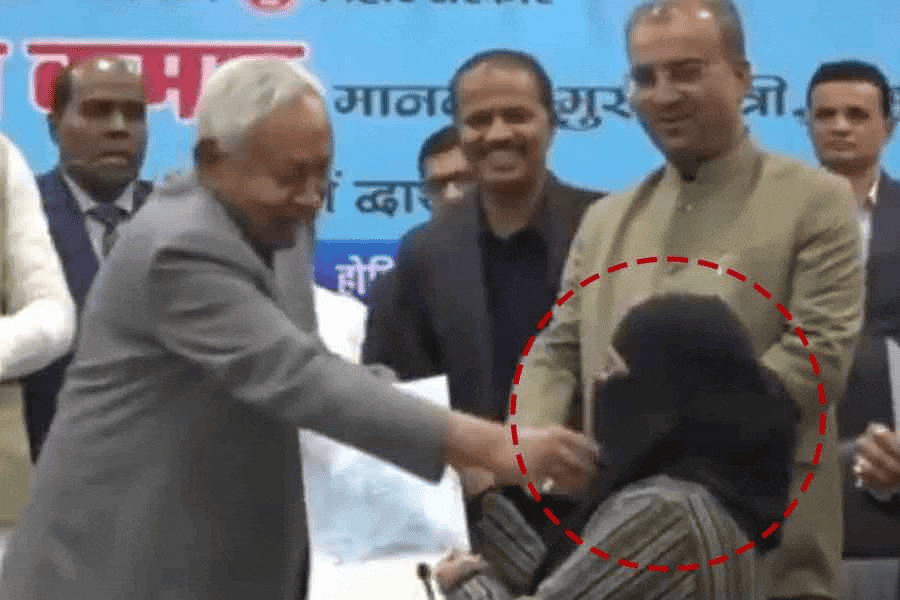The government needs to allocate more funds for scientific research, the corporate houses need to do their bit, and India’s scientists must get out of their comfort zone of routine research and trivial technology to pursue genuine, far-reaching science, the eminent scientist, Bikash Sinha, tells Subhoranjan Dasgupta, professor of human science, in an interview
Q: Prime Minister Narendra Modi gave us the inspiring slogan “Make in India”. But products and patents do not fall from heaven, like manna, on their own. They are the fruits of painstaking and path-breaking frontline research and advanced development….
Sinha: Precisely, and there’s the rub. Would you believe that India spends less than one per cent of its GDP on scientific research? This measly and miserable figure, frankly speaking, is quite ridiculous.
While Japan spends four per cent, the US five per cent and Germany five per cent of their GDPs on the advancement of science and technology, India has stuck with its less than one per cent for decades. It’s impossible to surge forward with this negligible state assistance. I appeal fervently to the new government to loosen its purse strings and follow the example provided by the industrial countries worldwide.
At the same time, the products and patents developed in India should be placed in the global network. That is, these should cross
the national border and appeal to other countries as well. The Indian Space Research Organisation has achieved some success in this sphere but other institutions like the department of atomic energy, department of science and technology and the Council of Scientific
and Industrial Research have turned sluggish. They do not have the global vision to march forward. They are only following the grand visions of (Homi Jehangir) Bhabha, (Vikram) Sarabhai. Nothing fantastic or path-breaking has happened under them.
We also have to realise that modern science and technology do not operate from the backyard; they should operate from the frontlines and, believe me, India, a big and powerful country, has the wherewithal to surge ahead. The government, on its part, should lead this march and allocate more funds. This less-than-one-per-cent-of-the-GDP jinx has to be broken.
We appeal to the Prime Minister to step in and be revolutionary in this particular sphere with a particular emphasis on accountability and also with a high degree of credibility when required — merit must be recognised at the cost of the routine.
What we need at the same time is proper, comprehensive planning: in other words, inclusive planning that will ensure the proper utilisation of the funds allocated. Further, we require immediate action.
It is high time we rejected the dithering and vacillation of bureaucrats and technocrats and strove to make India a truly global leader in science and technology. The rapid economic growth that the Prime Minister is looking for cannot happen without science and technology in the mainstream of economic planning.
Q: This less than one per cent of GDP — has this been the trend since 1947? Or was it different during the rule of Jawaharlal Nehru, who was known for his passion for science?
Sinha: The situation was entirely different in the past. We recall in this context the personal cooperation between Nehru and Homi Bhabha. Nehru gave a clear mandate to the eminent scientist to establish the department of atomic energy, and this ultimately led to Pokhran. I do not claim that there was a glut of funds in any way during the Nehruvian days, but what mattered at that point of time was the passion, commitment and dedication of the government and the Indian scientists.
Again, four mega steel plants were set up in this particular period — in Bokaro, Bhilai, Durgapur and Rourkela — and all these plants were in a position to apply and utilise the latest technology. In short, those were the days of feverish excitement, impassioned activity and boundless dreams.
Q: But this golden phase came to an end and now we are mired in unimaginative, routine reaction and petty politics….
Sinha: Something has gone wrong somewhere. Today, scientists do not have the courage and confidence to take a bold step. They mostly tend to behave as high-powered clerks. They are merely hanging around in the comfort zone. They do not have that adventurous spirit that inspired Jagadish Chandra Bose, Meghnad Saha, Satyen Bose, C.V. Raman, Homi Bhabha and Raja Ramanna. These great scientists and thinkers too were deprived of adequate financial support, but still they proved that science could flourish on the Indian soil.
I personally, think that a thick blanket of pessimism has wrapped our present-day science community. The scientists take their job as a mere job and nothing more. The “ananda” or joy of discovery and invention does not inspire them. And mind you, the great poet Rabindranath (Tagore) experienced this “ananda” while writing his masterpiece on basic science, Bishwa Parichay.
Moreover, the community is busy with trivial technology and not with genuine and far-reaching science. This easy engagement with triviality is self-destructive. Scientists who can still think of the higher and greater at this juncture should devote their attention to areas like superconductive technology, quantum computing, cryptography, the export of high-grade technology, and global communication.
Q: Should we appeal to the government alone? Should we not pressure the great Indian corporate houses to invest more in fundamental research and technology? These houses always seek the easy way out by hiring foreign experts and using transfer of technology.
Sinha: Barring the Tata Group, which does not limit itself to applied technology but also promotes basic scientific research, not a single corporate house has loosened its purse strings to support scientific and technological innovation.
The situation is radically different in the advanced world, where countries like Germany and Japan can boast of industrial conglomerates who keep aside massive amounts to guide and sponsor research. To give one concrete example, in the US, the California Institute of Technology, one of the best in the world, is totally funded by the American corporate sector. The great physicist, Nobel Prize winner Richard Feynman, was a professor of physics at this research centre.
Our corporate houses, on the other hand, are more interested in hotel management and elementary IT products. In their curriculum, science is merely named in passing. We really yearn for entrepreneur scientists like Vikram Sarabhai and Bhabha who played important roles in the region of policy-making as well. From their spirited engagement and participation to the present malaise has been a long downward journey.
I cannot fathom the present-day indifference. The entire world of science and technology is being treated like a pariah in our country. When are we going to cross that less-than-one-per-cent-of-GDP barrier?
Q: What should then be our present agenda, our dos and don’ts?
Sinha: One, appeal to the government, especially to the Prime Minister, who gave us the slogan “Make in India”, to release more funds for research, with frequent monitoring of the progress.
Two, appeal to the corporate houses to follow the example set by corporate houses in the West. These houses should have full-fledged research divisions that would concentrate on basic research and associated applied technology, like the Perimeter Institute in Canada or Kavli Institute.
Three, we should aspire to establish a new era with an undiluted emphasis on global development, inclusive planning and, what is most important, immediate action — in short, GII — with creativity, continuity and curiosity (CCC).
Four, instead of peddling legends and fairytales as science, instead of wallowing in the glorious past — Bhaskara, Brahmagupta, et al — instead of getting sucked up by the mandir/masjid altercation, scientists should lift their heads from the cloud of petty politics and strive to make India a front-ranker in science and technology in the world, in all appropriate spheres. India will emerge as a truly global leader when these preconditions are fulfilled. There is no other way out.
In fact, I think the path of possible progress is clear and well tested. Adequate funds will ensure basic research and scientific experiments. The latter will lead to the flourishing of utilitarian technology, and that technology would lead to the creation of innovative products and promising patents.











